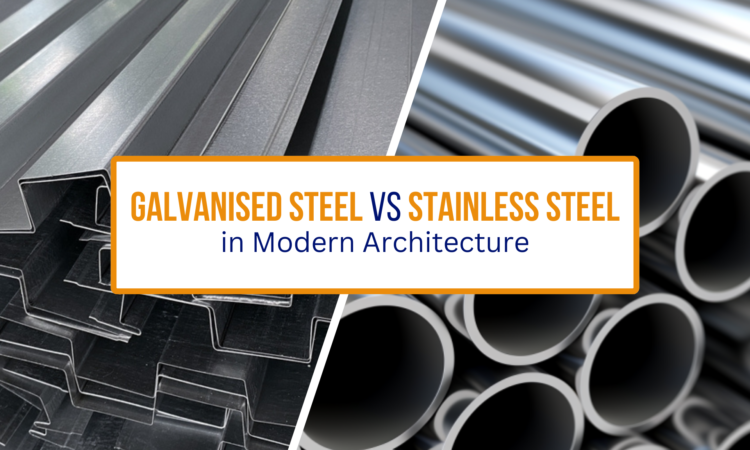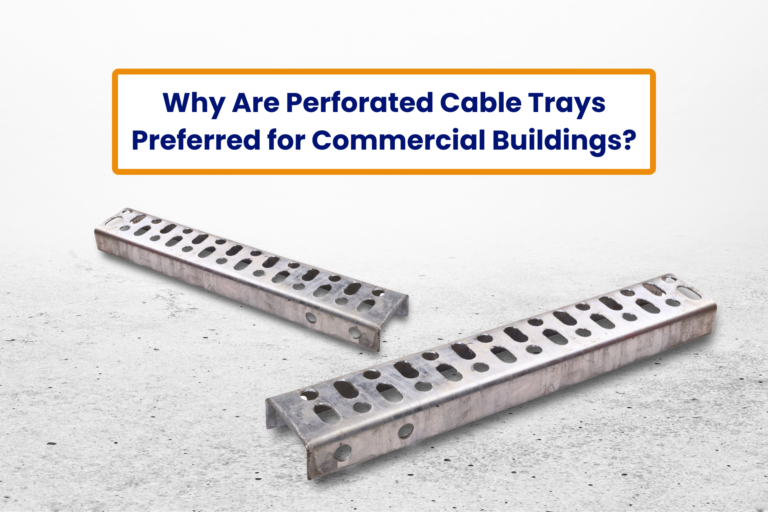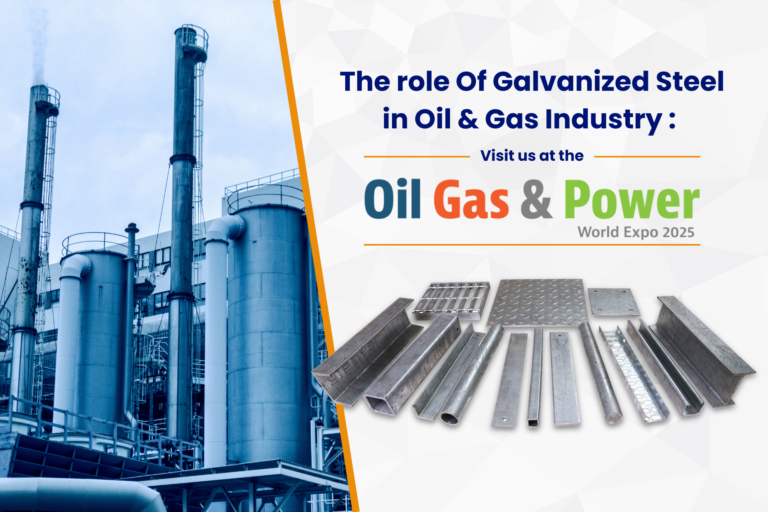Aesthetic Differences: Galvanised Steel vs Stainless Steel in Modern Architecture
In modern architecture, materials are the determinants of the visual appeal, durability, and functionality of structures. Among the materials used in architectural and structural applications, two common choices are galvanized steel and stainless steel. These are strength-based and corrosion-resistant but offer different aesthetic and functional advantages that can determine the overall look and feel of a building. This guide explores the aesthetic differences of galvanized steel vs stainless steel and how these differences influence architectural design.
Formulation & Nature of Galvanized Steel
The formulation is fundamental in defining steel products’ longevities as well as functionality, particularly when it comes to hot dip galvanized steel. The process requires dipping steel in molten galvanized zinc to create a protective, strong layer against environmental aspects. The formulated zinc layer accurately affects the steel‘s corrosion resistance, guaranteeing durability in industries ranging from building to manufacturing industries.
Features of Galvanized Steel
The major feature of hot dip galvanizing is its superior resistance to corrosion. Through the coating of steel in a thick layer of galvanized zinc, the material acquires better protection from rust and oxidation, which suits it for application in outdoor and industrial environments. Galvanized plates and GI strips are commonly used in infrastructure, automotive, and heavy machinery industries because they are resistant to adverse conditions.
Yet another vital aspect of hot dip galvanized steel is that it is cost-effective. As compared to other corrosion-resistance treatments, galvanization is more enduring with less maintenance required, thus becoming the builders‘ and manufacturers‘ choice. Plus, being an eco-friendly product since galvanized steel is recyclable, contributes to its popularity.
What is Galvanized Steel?
What is Galvanized Steel?
Galvanized steel is a steel coated with a protective layer of zinc through a process known as galvanization. The zinc layer provides the metal with an added layer of corrosion resistance, making it ideal for outdoor applications where exposure to elements like moisture, air, and pollutants is unavoidable. One popular form is hot-dip galvanized steel, which involves immersing the steel in molten zinc for an even, durable coating.
What is Stainless Steel?
Stainless steel is essentially a composition of iron with major content of chromium along with other elements, mainly nickel. The key element present is chromium, which acts by forming a passive layer that avoids rust and corrosion to protect the metal. In the long term, it becomes stable with its resilience high. As stainless steel has great power for long time resilience it suits perfectly in all sorts of surroundings that are asked not only for good visual attraction but also have weathering and environmental power requirements.
Aesthetic Comparison: Galvanized Steel vs Stainless Steel
1. Surface Finish and Visual Appeal
Galvanized Steel:
Galvanized steel often has a spangled or patterned surface due to the crystallization of zinc during the hot-dip process. This unique, mottled appearance gives galvanized steel a rustic, industrial look that is fitting for contemporary and industrial designs. This aesthetic has made galvanized steel popular in applications where architects seek a raw, unpolished look that still conveys durability.
Stainless Steel:
As a contrast, stainless steel gives a silky, bright, and highly polished reflection. Its metallic sheen easily makes way for any modern or minimalist design aesthetic and can also create the impression of sophistication and premium feel. From matte and satin to brushed and mirror-polished, it comes in different finishes suitable for multiple architectural styles that go from minimalist urban to futurist high-tech.
2. Colour and Texture
Galvanized Steel:
Because it is coated with zinc galvanized steel usually takes on a silvery-gray appearance. But it’s speckled texture gives it a rough, unfinished look, making it perfect for creating an industrial or warehouse look. It is commonly used in applications such as exposed ductwork, handrails, and exterior facades where an industrial look is required.
Stainless Steel:
Stainless steel comes in a variety of finishes, from very high gloss to brushed textures. Its reflective quality can add another layer of sophistication to architectural structures, giving buildings a more modern, polished look. For designers who want a clean and reflective surface, stainless steel comes out as the first.
3. Durability and Maintenance
Galvanized Steel:
Hot-dip galvanized steel performs well on its resistance in harsh settings, particularly salt water or even urban pollution, but as with any applied coating over metal, it would wear through the zinc protection over a period of years, along with the patina potentially dropping. Therefore, occasional maintenance and even re-galvanization may eventually be needed. Its value lies predominantly in the appearance of aged patina through weathering material.
Stainless Steel:
The amount of chromium in stainless steel makes it resistant to rust and stains. Due to maintenance, it retains a polished appearance for a longer time. This is the reason why stainless steel is used in highly trafficked areas. The material’s tolerance to tarnish and fade enhances its appearance. Hence, it can retain a sleek look for several decades, thereby finding it suitable for high-profile architectural projects.
Applications of Galvanized and Stainless Steel in Architecture
Outdoor Structures
Galvanized steel is the most commonly used steel because of its rough, resistant properties to corrosion for most outdoor architectural elements. However, hot-dip galvanized steel can be very efficient for applications that require some raw industrial look for outdoor frames, handrails, and fences as they support the landscape. Exterior facades, canopies, and sculptures are often designed with stainless steel because it provides a luxurious appearance and needs less maintenance.
Interior Design Elements
The gap between galvanized and stainless steel is much clearer in interior design. This is because galvanized steel would be applied for visible ductwork, railings, and industrial-inspired decor which gives a kind of an urban or industrial aesthetic. Meanwhile, stainless steel would suit modern, high-end interior applications in appliances, countertops, and custom furnishings with a polished finish and a smooth texture for sophistication as well as to create that refined and contemporary look.
Structural Applications
Galvanized and stainless steel both play integral parts in building construction, from the structural beams to the reinforcing bars. Large-scale structures employ galvanized steel in large sectional applications because of its durability against moisture, weathering and, in contrast, are applied in projects requiring a seamless finish with corrosion resistance. High-profile structures, including museums and installations, typically use stainless steel to create an architectural “wow” effect.
Environmental Considerations and Sustainability
Sustainability in the choice of galvanized and stainless steel in modern architecture is another rapidly increasing factor. Both the materials can be recycled to minimize the environmental impact created in the production process. Though the chromium and nickel in stainless steel increase its environmental footprint, its long life with less maintenance requirements can compensate over time. Fully recyclable, zinc-coated galvanized steel often employs recycled zinc in its manufacture.
Galvanized or Stainless Steel: Which is the Best?
This mainly depends on what aesthetic and durability is wanted in a project and within the budget of that particular project. If a project requires industrial aesthetic and is done on a more budget-constrained scale yet has durability, galvanized steel works best. Conversely, where elegance, long time use, and shiny surface are preferred, stainless steel takes all the glories.
Future of Steel in Modern Architecture
As architects continue to push the boundaries of what is possible with design, galvanized and stainless steel remain in extremely high demand as attractive, versatile materials that can satisfy a wide range of needs. Advances in techniques for applying coatings and different alloy compositions may soon extend the choice of texture, color, and finish as well. For now, both play unique roles, each suited to different applications, as they enhance architectural design with their aesthetic and functional flair.
Galvanized steel and stainless steel are two of the elements that make modern architecture great, both visually and in structure. From rugged industrial themes to sleek exterior reflective surfaces, each material set gives architects a set to shape spaces according to their dreams. At Parco Engineers we understand the importance of utilizing the right materials for great aesthetic appeal and durability as well. Be it the robust appeal of galvanized steel or the polished sheen of stainless steel, each stands on its unique pedestal, finding its unique slot in an ever-changing arena of architecture.
Deciding Between Stainless Steel vs. Galvanized Steel
When choosing the appropriate steel for your application, it’s crucial to know how stainless steel and galvanized steel differ. Corrosion protection in galvanized steel is dependent on a coating of zinc, which inhibits rust formation, whereas stainless steel has chromium that provides inherent resistance to oxidation.




4 Replies to “Aesthetic Differences: Galvanised Steel vs Stainless Steel in Modern Architecture”
Comments are closed.